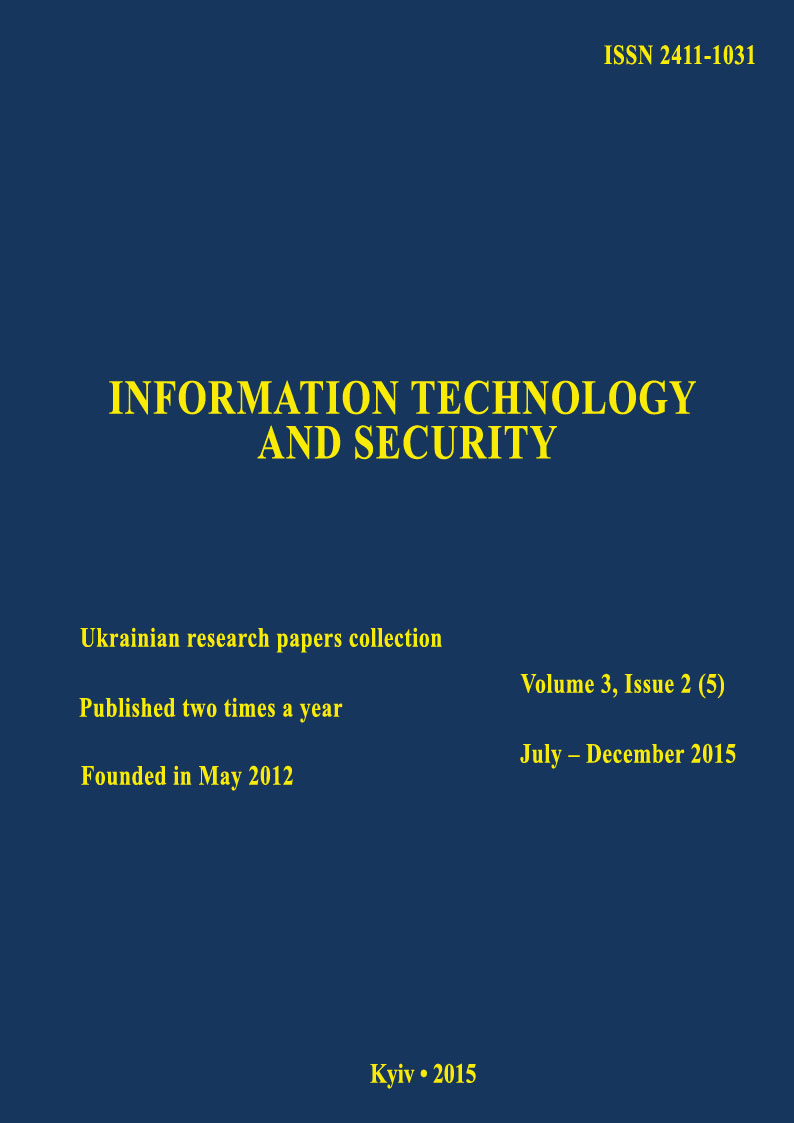Revealing channels of information leakage due to stray electromagnetic radiation and guidance by treating the spectrum microwave frequency
DOI:
https://doi.org/10.20535/2411-1031.2015.3.2.60888Abstract
The analysis of the formation of information leakage through electromagnetic radiation and side are different components of a PC. For a standard computer monitor interception is possible at frequencies up to 50 harmonics of the clock frequency. Emission can occur over a wide range of frequencies (from several Hz to GHz) and the range of real interception reach hundreds of meters. It is shown that the information content of signals is significant at frequencies GHz TEMPEST units, and there is the need for special studies at frequencies of several GHz, although the method does not require it. It is shown that, contrary to popular belief grounding does not play a determining role in the protection of information from leakage channel TEMPEST. Grounding is only necessary for the requirements of electrical safety. In some cases, when you connect the ground level of spurious emissions may increase. It is shown that, in most practical cases, the cable system is a great dish for all spurious equipment connected to the network. Spurious emissions arising in the components of the computer are directed on all the wires of the cable network.
Keywords: information, information protection, side electromagnetic radiation and crosstalk, informative signal.
References
Kuhn, G. Markus, Anderson, J. Ross (1998), Soft Tempest: Hidden Data Transmission Using Electromagnetic Emanations, Lecture Notes in Computer Science, Vol. 1525, pp. 124-142.
Lenkov, S.V., Peregudov, D.A., Horoshko, V.A. (2010), Metody i sredstva zashchity informatcii. Tom I. Nesanktcionirovannoe poluchenie informatcii [Methods and means of information protection], Ariy Publ., Kyiv, 464 p.
Piatachkov, A. G. (2007), Zashchita informatcii, obrabatyvaemoi vychislitelnoi tekhnikoi, ot utechki po tekhnicheskim kanalam [Protection of information processed by computer technology from leakage through technical channels], NP RTsIB «Fakel» Publ., 194 p.
Levchenko, H., Ilchenko, M., Khoroshko, V., Burkatskyi, V., Zolotukhin, K., Hroshev, V. (2000), Osoblyvosti vykorystannia EOM dlia obrobky informatsii z obmezhenym dostupom v suchasnykh umovakh [Features of the use of computers for processing classified information in modern], Pravove, normatyvne ta metrolohichne zabezpechennia systemy zakhystu informatsii v Ukraini, No. 1 (1), pp. 84-87.
CHekhovskii, S., Rudakov, IU., Pobochnye izlucheniia i zashchita informatcii v lokalnykh setiakh [Spurious emissions and information protection in local networks], available at : http://www.epos.ua/view.php/pubs_2?subaction=showfull&id=1049662800&archive=&start_from=&ucat=2& (accessed 12 July 2015).
State Committee for Standardization (2000), GOST R 50571.22-2000, Elektroustanovki zdanii. CHast 7. Trebovaniia k spetcialnym elektroustanovkam. Razdel 707. Zazemlenie oborudovaniia obrabotki informatcii [Electrical installations of buildings. Part 7. Requirements for specical installations or locations. Section 707. Earthing requirements for the installation of data processing equipment], Moskow, 8 p.
Stechenko, V., Naidenko, V., Prokofev, M., Kurashkevich, A. (2007), Analiz zashchity kompiutera ot utechki po tcepiam pitaniia i zazemleniia [Analysis of computer protection against leakage through the supply lines and ground], Pravove, normatyvne ta metrolohichne zabezpechennia systemy zakhystu informatsii v Ukraini, No. 1 (14), pp. 160-165.
Aizenberg, G. Z., Belousov, S. P., ZHurbenko, E. M., Kliger, G. A., Kurashov, A. G.(1985), Korotkovolnovye antenny [Shortwave antenna], Radio i svyaz Publ., Moskow, 536 p.
Downloads
Published
How to Cite
Issue
Section
License
Copyright (c) 2020 Collection "Information technology and security"

This work is licensed under a Creative Commons Attribution 4.0 International License.
The authors that are published in this collection, agree to the following terms:
- The authors reserve the right to authorship of their work and pass the collection right of first publication this work is licensed under the Creative Commons Attribution License, which allows others to freely distribute the published work with the obligatory reference to the authors of the original work and the first publication of the work in this collection.
- The authors have the right to conclude an agreement on exclusive distribution of the work in the form in which it was published this anthology (for example, to place the work in a digital repository institution or to publish in the structure of the monograph), provided that references to the first publication of the work in this collection.
- Policy of the journal allows and encourages the placement of authors on the Internet (for example, in storage facilities or on personal web sites) the manuscript of the work, prior to the submission of the manuscript to the editor, and during its editorial processing, as it contributes to productive scientific discussion and positive effect on the efficiency and dynamics of citations of published work (see The Effect of Open Access).

